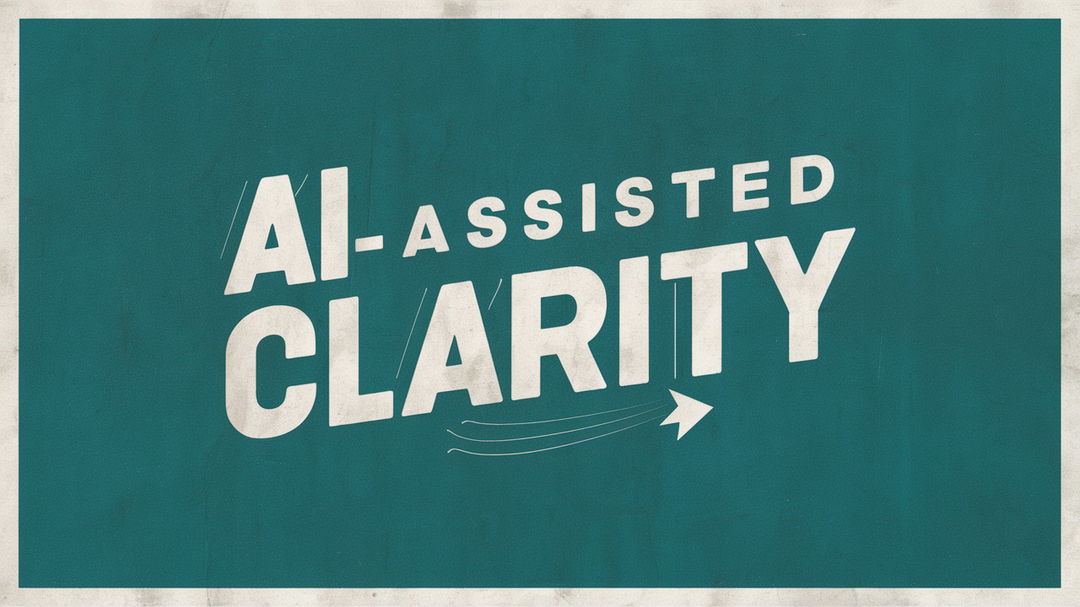
In the context of Enterprise Agility, AI-assisted clarity refers to the use of artificial intelligence technologies to help organizations navigate the complexity and complications that arise in the rapidly evolving business landscape.
As organizations face an overwhelming amount of information from multiple sources, AI-assisted clarity enables the processing of vast amounts of data, sensing patterns and extracting insights that support decision making and drive sustainable success.
The role of AI-assisted clarity in Enterprise Agility is twofold:
- Navigating complexity: Complexity refers to situations where there are many interconnected elements and the relationships between them are not always clear or predictable. In such cases, it can be difficult for humans to recognize patterns, correlations and cause-and-effect relationships. AI-assisted clarity helps organizations understand this complexity by:
a. Processing huge amounts of data: AI algorithms can analyze vast amounts of structured and unstructured data from various sources such as customer interactions, market trends and internal processes much faster and more accurately than humans.
b. Detecting hidden patterns and correlations: AI-powered tools can uncover patterns, correlations, and anomalies that are invisible to the human eye, providing valuable insights into the complex web of relationships between different factors affecting the business.
c. Data-driven decision making: By using AI-generated insights, organizations can make more informed decisions that take into account the complex relationships between the different elements of their business system. - Dealing with complicated situations: These are situations where there is a clear cause-and-effect relationship, but the solution is not clear or easily recognizable. AI-powered clarity helps organizations manage these complications by
a. Identifying root causes: AI-powered tools can analyze historical data, identify bottlenecks and determine the root cause of complications, allowing companies to develop targeted solutions.
b. Optimizing processes and resource deployment: By simulating different scenarios and analyzing potential outcomes, AI can help companies streamline processes, optimize resource allocation and improve overall efficiency.
c. Anticipate and mitigate potential problems: AI-assisted clarity can continuously monitor key performance indicators and provide early warning signs of potential complications, allowing organizations to take proactive steps to mitigate risks and maintain smooth operations.
Integrating AI-assisted in the Enterprise Agility Way of Thinking enables organizations to improve situational awareness. Through a richer, real-time understanding of the business landscape, AI-assisted clarity helps organizations better sense situations and adapt to ever-changing market dynamics and customer needs.
It also improves accelerated learning and adaptation. AI-assisted insights enable organizations to quickly identify areas for improvement, test new ideas, and adjust their strategies based on data-driven feedback loops.
AI-assisted clarity can also impact innovation. By uncovering hidden opportunities and identifying potential disruptions, AI-powered clarity helps organizations stay ahead of the curve and drive continuous innovation.
Regarding decision-making and risk management, AI-assisted clarity provides organizations with the insight and foresight they need to make informed decisions, anticipate potential challenges, and manage risks more effectively.
As organizations navigate the complexities of the AI era, AI-assisted clarity becomes indispensable for achieving the Three Universal Outcomes of Enterprise Agility: always ready, responsive, and innovative.
By leveraging exponential technologies such as AI to process information, generate knowledge, and cultivate wisdom, organizations can achieve a state of fluency, continuously adapting and thriving in the face of accelerated change while creating shared value for all stakeholders.
